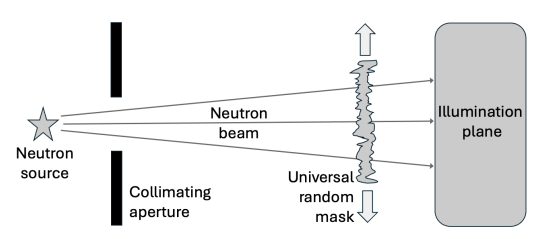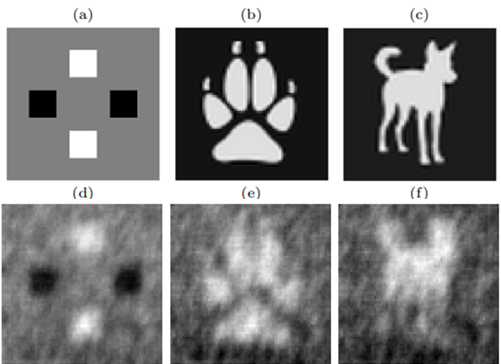Key Points
Applications of neutron and gamma ghost imaging and ghost projection range from materials science to critical minerals mining
The ARC has awarded a Discovery Project Grants to ANU, Monash, Swinburne University of Technology and ANSTO to develop a world-first 3D elemental mapping technique to simultaneously measure the structure and elemental composition of objects
The neutron imaging team at ANSTO will undertake experiments to support the research on the neutron tomography instrument Dingo
We may have missed Halloween with this research about ghost images, but neutron and gamma ghost imaging are important scientific developments reported in two publications, and the subject of an Australian Research Council Discovery Project grant awarded to a team that includes ANSTO scientists.
Dr Joseph Bevitt, Dr Floriana Salvemini and Hon A/Prof Ulf Garbe are partner investigators on a grant led by ANU and partnering with Monash University and Swinburne University of Technology to develop a world-first 3D elemental mapping technique to simultaneously measure the structure and elemental composition of objects.
This is achieved by combining neutron computed tomography (NCT) with neutron activation analysis (NAA) through a novel computational imaging technique known as 'ghost imaging'.
Both the OPAL multi-purpose reactor, which produces neutrons, and the neutron imaging instrument Dingo at the Australian Centre for Neutron Scattering are essential capabilities needed for the research.
This innovation is significant as there is currently no universal technique to non-invasively and quantitatively map the composition of samples larger than a few millimetres in size. The elemental imaging technology has immediate applications in fields ranging from critical-mineral mining to materials science and can help Australia transition to a net-zero future.
Dr Bevitt, a senior scientist with expertise in neutron and X-ray imaging, has provided an explanation of the concept of ghost imaging.
When objects are exposed to neutrons, they emit prompt-gamma rays. The energy of these gamma rays is specific to each chemical element. By recording the spectrum of gamma rays emitted by an object, its elemental composition can be determined, but with no positional sensitivity nor spatial resolution.
Ghost imaging (GI) is a computational imaging technique that was demonstrated in 1995.
"It was first thought to rely on the "spooky action at a distance" of entangled photons to produce an image," said Dr Bevitt.
GI produces an image of an object by combining information from two detectors: an image sensor that does not view the object, and a single-pixel detector that does view the object.
Used alone, neither detector can produce an image. However, correlating data from the two detectors enables an image of the object to be computed.
"In GI, the image sensor measurements (the noisy square images below) tell us nothing about the object, and the single-pixel detector (the coefficients/numbers represented by letters) alone tell us nothing about the structure of the object. The ghost image, as shown below, is generated by correlating the patterned illuminations with the single-pixel detector measurements," Dr Bevitt explained.

The collaborative research team first demonstrated that GI could be achieved with neutrons in experiments using the Dingo neutron imaging instrument in research that published in the journal Physical Review A in 2020.
"Ghost imaging has the potential to revolutionise neutron-based imaging as it enables high spatial resolution without an image sensor. Just imagine taking photos with a camera in which the imaging sensor has been thrown out!" said Dr Bevitt.
"If you have been able to follow that, it gets better, there is another ghost technique to explore," explained Dr Bevitt.
This year the same team achieved the world-first ghost projection with neutrons, in which a beam of neutrons is precisely shaped (into any shape) using a single randomly patterned mask.
The research reported in Physical Review A this year is the reverse of GI.
The ability to arbitrarily shape a neutron beam 'on demand' allows scientists to selectively deliver doses away from sensitive areas of samples, and benefits the testing of electronic components for space, or neutron therapies.
Ghost projection relies on the principle that, by moving a universal random mask to a number of specified locations over time, any beam shape can be created over the illumination plane (see illustration below).

"Since the experiments were conducted on 'Dingo', the name of our neutron imaging instrument, the team chose to demonstrate that the neutron beam could be shaped on command as a dingo, and its paw print. The resulting ghost projections are as blurry as their namesake, but so too were the first ever photographs," said Dr Bevitt.

"It will be very exciting in the next steps, to develop a method to simultaneously determine the structure and quantitatively map the distribution of materials inside large objects, to improve the resolution capabilities of Dingo, and explore how this imaging can benefit Australia," commented Dr. Bevitt.
Thanks to Dr Jospeh Bevitt for his assistance with this article.






